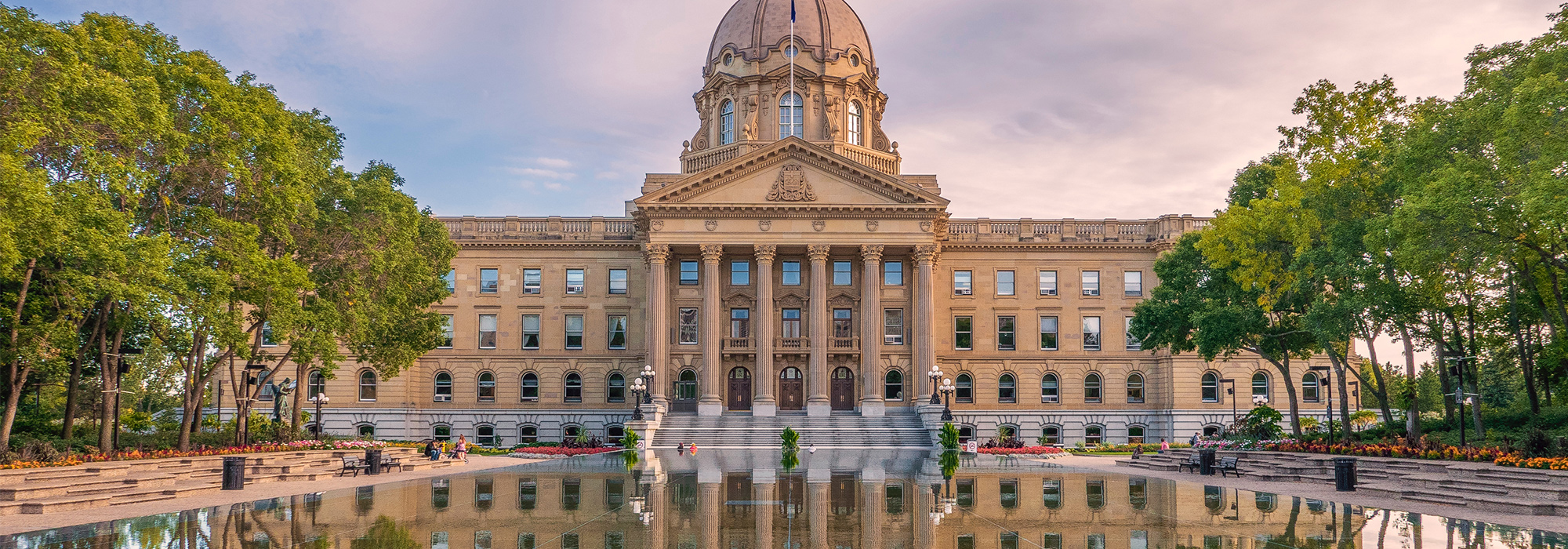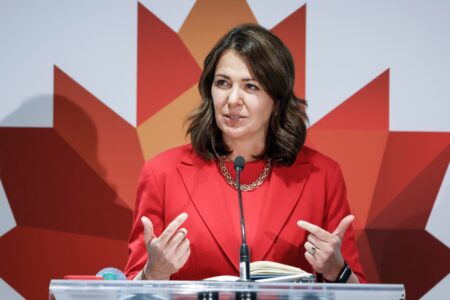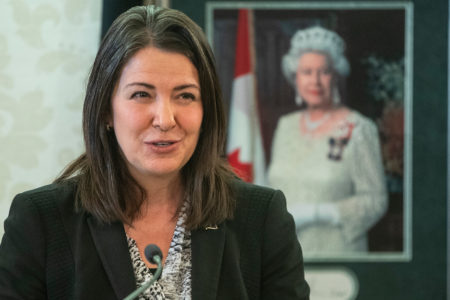
It’s time to lead again. The Wildrose Alliance is a new provincial party in Alberta, but it has garnered interest from across the country. Perhaps this is because when Albertans get restless and choose a new political direction it has an effect on the rest of the country. When the United Farmers swept to power, John Brownlee successfully negotiated the Resource Transfer Act, to put Alberta on par with other provinces in controlling the development of its resources. William Aberhart and the Social Credit attempted to usurp federal jurisdiction over federal banking laws, prompting the federal use of disallowance on several bills. Peter Lougheed and the Progressive Conservatives waged battles with Ottawa over the National Energy Program, and the unfair tax burden it put on Alberta energy producers, a battle we ultimately won. When Preston Manning’s Reform movement arose with the battle cry “The west wants in,” his party brought the concept of focused federalism to the national forefront, along with a demand to balance the budget and get the fiscal house in order.
Paralleling this national effort in Alberta was Premier Ralph Klein, who was elected in 1993 with a mandate to get Alberta’s fiscal house in order. The deficit was eliminated, spending was cut, the debt was eliminated, taxes were lowered and for the first time in many years we began socking money away in savings again. Klein’s “Alberta Advantage” was more than just a slogan, it was a source of pride. Alberta was seen as a national leader in the exercise of good government: a low-tax and streamlined regulatory environment that nurtured entrepreneurship, a low-personal-tax and low cost-of-living environment that nurtured families and a scrappy and forceful premier who asserted our role as a leader in Canada and beyond.
What a difference a few years makes. Albertans have been shocked to see their province move from becoming a national leader to becoming an international laughingstock. The decision of the current government to tear up contracts and impose a punitive new royalty framework shattered investor confidence. Entrepreneurs from all sectors are being strangled in regulatory process and red tape that delays development of projects, sometimes for years. With three new pieces of legislation, the province has created a framework for the biggest property rights grab in Alberta history. Inept efforts to educate the international community and other Canadians on the value of the oil sands have given the province an environmental black eye. Years of overspending have finally caught up with the finance department — the last budget brought in the biggest budget deficit in Alberta history. The province is depleting savings at a stunning pace and racking up new debt to pay for an overly aggressive capital plan. Ministers of the Crown are openly musing about bringing in new taxes. We have become the biggest-spending province in the country, second only to Newfoundland and Labrador. Meanwhile service continues to decline and Albertans are left asking, Where did all the money go?
It is difficult for Alberta to give advice to other governments on budget matters until our own fiscal shortcomings are resolved. Alberta’s current deficit woe is not a problem of revenues; it is a problem of overspending and it’s a problem economists and commentators have been warning about for more than a decade.
In its 39 years of government, the Alberta Progressive Conservatives have now frittered away two booms. Wildrose members do not believe the PCs should be given a chance to fritter away a third. The Wildrose movement is fundamentally an Alberta-based movement with common sense Alberta values at its core. It starts with our beliefs about the role of government.
- Government is elected by the people of Alberta and works for the people of Alberta.
- Government’s main purpose is to ensure individual freedoms: freedom of speech, freedom of thought, freedom of assembly, freedom of association and economic freedom.
- Government’s job is to set the rules of the game and enforce them, but then get out of the way and allow businesses to compete.
- Government is not the first resort; it should be the last resort. Individuals, families and communities should be free to govern themselves in their own way without a lot of interference from the legislature.
- Government decision-making should be decentralized. The level of government that is closest to the people is best able to make decisions in the best interest of those they serve, whether that be the local school, the local hospital or the local city council.
- Government is a democracy, and that applies to its own caucus and cabinet as much as it does to its relationship to the electorate. MLAs don’t work for their leader or their party; they work for the people of the constituency they represent, and more generally for the people of Alberta.
Generally, I find Albertans share these values. With new leadership guided by these values our province has the ability not only to address our issues at home, but to engage in a renewed public policy dialogue with other provinces and the federal government. There are many ways in which Alberta can play a leadership role in a strong and united Canada.
It is difficult for Alberta to give advice to other governments on budget matters until our own fiscal shortcomings are resolved. Alberta’s current deficit woe is not a problem of revenues; it is a problem of overspending, and it’s a problem economists and commentators have been warning about for more than a decade. For 10 years, the Alberta government has been increasing year-over-year spending at a rate that has doubled inflation and population growth. If government had merely held spending in line with inflation and population increases, we would not be running a deficit at all this year; we’d be running a $3.9-billion surplus.
There is no need to lurch between overspending and massive cuts. Once a government department has become accustomed to a budget increase, it finds it impossible to give it up without causing massive disruption to frontline services. Public choice theory describes why a bureaucracy behaves this way. The challenge for politicians is, at a minimum, to restrain year-over-year spending growth to create the surpluses that can be used to pay down debt and reduce taxes. Alberta has had success in the past establishing rules through legislation to aid in enforcing the discipline of such measures. The Fiscal Accountability Act initially banned operating deficits and mandated that 75 percent of all surpluses would be directed to debt repayment, with only 25 percent allowed for new spending. These kinds of rules served the province well, until political expediency caused them to be revised and repealed.
A Wildrose government would return to a disciplined approach in legislating good fiscal practices. We would limit year-over-year spending increases to inflation and population growth, or the average spending increase in other provinces, whichever is less. We would legislate that a significant share of our highly volatile resource revenues be dedicated to savings, so that we have a means to generate sustainable investment income to prepare for a time in the future when resource revenues dry up.
The “Alberta Agenda” letter, authored years ago by several prominent conservative Alberta academics and commentators, urged the Alberta government to assert its authority under the Constitution over areas of provincial jurisdiction. At the time, it was perceived negatively by our neighbours in eastern Canada, but it shouldn’t have been. This is what grown-up provinces do — they take responsibility for providing the programs and services to their citizens that they are mandated to provide under the Constitution. Quebec has its own provincial pension plan, it has its own provincial police force, it has taken ownership over its immigration policy, it is at the forefront of reforming its health care system. Alberta has the third-largest economy in the country. We have the means and the sophistication to be able to provide services to Albertans on our own. This returns the discussion to Preston Manning’s concept of focused federalism. Not only will provinces be better served by having their provinces take control over their own areas of jurisdiction, but Canadians will be better served if the federal government does likewise. Each province has its own vision for how essential social services ought to be delivered, and each needs to be free to implement its own approach in response to its electorate. But provinces also need to have the means to do so. A Wildrose government would examine each provincial program area currently being provided by the federal government and consult with Albertans to develop a plan for how we would take full responsibility for each of them.
This brings us to the issue of equalization. Albertans are generous. I believe most Albertans support the premise of equalization, so that residents of all provinces can have roughly equivalent programs for roughly equivalent tax rates. If the amount Ottawa collected and redistributed to other provinces began and ended with this premise, there likely would be no complaints from Alberta. But that is no where it begins and ends. Because Alberta has historically had a booming economy and a high workforce participation rate, we end up paying to Ottawa more corporate income tax, more personal income tax, more EI and CPP premiums, more fuel tax, more GST and other federal taxes than other provinces. We also get back far less in federal transfers and spending. In the latest calculation this fiscal transfer amounted to about $20 billion — which is equivalent to more than 50 percent of own-source provincial revenues. A recent study by the Frontier Centre for Public Policy, whose authors have adapted it for this issue of Policy Options, shows Ontario and British Columbia have a similarly large fiscal imbalance, and that recipient provinces are able to enjoy a level of services that is not available in the provinces of these three contributors. Quebec post-secondary students enjoy tuition rates that are less than half of what Alberta students pay. Quebec parents enjoy a highly subsidized daycare program that is not available in Alberta. Quebec has a higher number of nurses, doctors and teachers than Alberta. And as Newfoundland Premier Danny Williams pointed out in a recent speech to the Calgary Chamber of Commerce, Quebec consumers enjoy subsidized electricity rates from their Crown hydro assets, which would otherwise provide a healthy source of revenue for the provincial government. This is not fair and it is not sustainable. A Wildrose government would embark on a national discussion to rebalance tax revenues more appropriately between Ottawa and the provinces, so provinces have enough tax points to generate sufficient revenues locally, and greatly scale back the amount of federal transfers.
The scientific debate on climate change is far from settled. There is no scientific consensus on the extent to which manmade emissions of carbon dioxide are affecting the climate, there is no scientific consensus on what the ultimate effects of warming will be, there is no scientific consensus on how quickly warming will occur, and there is no scientific consensus on what policy-makers should do to address it. With so much left unsettled, we need to have an honest and comprehensive discussion on what reasonable options we will, as a nation-pursue. A national cap-and-trade program is not in Canada’s interest, and it is certainly not in Alberta’s interest. A study by TD Bank in conjunction with the David Suzuki Foundation found that immediate aggressive action to curb carbon dioxide emissions would be “the biggest fiscal shock in Canadian history.” By 2020, Ottawa would be raking in $46 billion to $72 billion per year, a cost that would fall disproportionately on Alberta. This is clearly not in our province’s interest. It is also not a reasonable option to shut down Alberta’s oil sands, as some eastern Canadian political leaders have suggested. Oil sands development benefits all of us. Modelling from the Canadian Energy Research Institute suggests oil sands development over the next 35 years will generate an additional $34 billion in tax revenue for the federal government. It will create, on average, more than 67,000 jobs per year, including manufacturing jobs in Ontario and Quebec. It will provide a safe supply of energy to meet North America’s energy security needs. It is a resource that will be developed, and the industry will continue to make technological improvements to develop the resource in a manner that has the least amount of impact on the environment.
From the perspective of reducing Canada’s greenhouse gas emissions, targeting oil sands is not the most sensible place to start. The sensible place to start is to have a meaningful discussion on what is actually achievable. The federal government’s Copenhagen proposal to reduce emissions 17 percent below 2005 levels by 2020 is likely not achievable, so why pretend otherwise? Setting the right target has to be the first step in discussing how to go forward on collective action. The second point is to be honest with consumers on what the cost of achieving the target will be. So far politicians have pretended that these costs can be loaded up on large emitters of greenhouse gases with no effect on consumer prices. That is simply not true. Gasoline prices will go up, power prices will go up, home heating costs will go up, and consumers need to understand the implication of policy decisions on their household budgets before any decisions are made. Finally, we need to go after the low-hanging fruit and pursue the least expensive options first. Switching to natural gas for many of our energy needs, now that prices are low and supplies are plentiful, should be a key part of our national plan to reduce overall emissions. Creating mechanisms and incentives to assist consumers in greening their homes and cars and to assist firms in greening their buildings and fleets should be the second aim. A Wildrose government would embark on a national discussion to get agreement on reasonable, cost-effective and achievable targets for greenhouse gas and toxic emissions.
The federal government’s Copenhagen proposal to reduce emissions 17 percent below 2005 levels by 2020 is likely not achievable, so why pretend otherwise? Setting the right target has to be the first step in discussing how to go forward on collective action. The second point is to be honest with consumers on what the cost of achieving the target will be.
In 2007, the Alberta and British Columbia governments signed the Trade, Investment and Labour Mobility Agreement. In an article I wrote for the Canada West Foundation on TILMA, I pointed out how regulation has become the new tool of those who want to expand the role of government. In a 2001 Vancouver Sun interview, former premier Glen Clark said: “We were an old-fashioned activist government, with no more money. So you’re naturally driven to look at ways you can be an activist without costing anything. And that leads to adding to regulation.” The business and labour sectors have borne the brunt of this activist intention through increased regulations in the name of workplace health and safety, the environment, consumer protection and so on. The net result has been less investment, sluggish growth, higher prices, less labour mobility and fewer choices. TILMA created in Alberta and BC the second-largest trading bloc in the country, behind Ontario. TILMA’s unique approach — to include all areas and place the onus on a provincial government to negotiate areas to exclude — makes it a far more comprehensive agreement than other approaches that have been tried in the past. Since it came into effect, there has been considerable progress in tearing down barriers to labour mobility throughout the country. A Wildrose government would ensure that this drive to streamline regulations and keep interprovincial doors open to new investment, new business growth and worker mobility remains a topic at front of mind for our provincial counterparts.
It seems Albertans are uniquely concerned about democracy. We have been at the forefront of allowing Senate elections and had success when our first elected senator, Stan Waters, was appointed in 1990 and when our second elected senator, Bert Brown, was appointed in 2007. The Reform Party advocated for more direct democracy, through mechanisms like citizens’ initiatives, referendums and recall, policies the Wildrose party shares. We also believe in free votes in the legislature and in fixed election dates. When you value democracy, you value choice. In Alberta, we do not elect oppositions. We elect governments. Always. Every so often there are seismic shifts in the political landscape in Alberta, where we stand up and say, “You’ve lost your way,” and we sweep the old party aside so a new and better alternative can come in and do what so badly needs to be done.
The Wildrose was developed to be a right-of-centre alternative to the Progressive Conservatives. We were created to fill a void in the political spectrum. Now it is up to us to change the direction of our province and, if we are successful, to help chart a new and positive course for federal-provincial relations in our country.
Photo: Shutterstock






